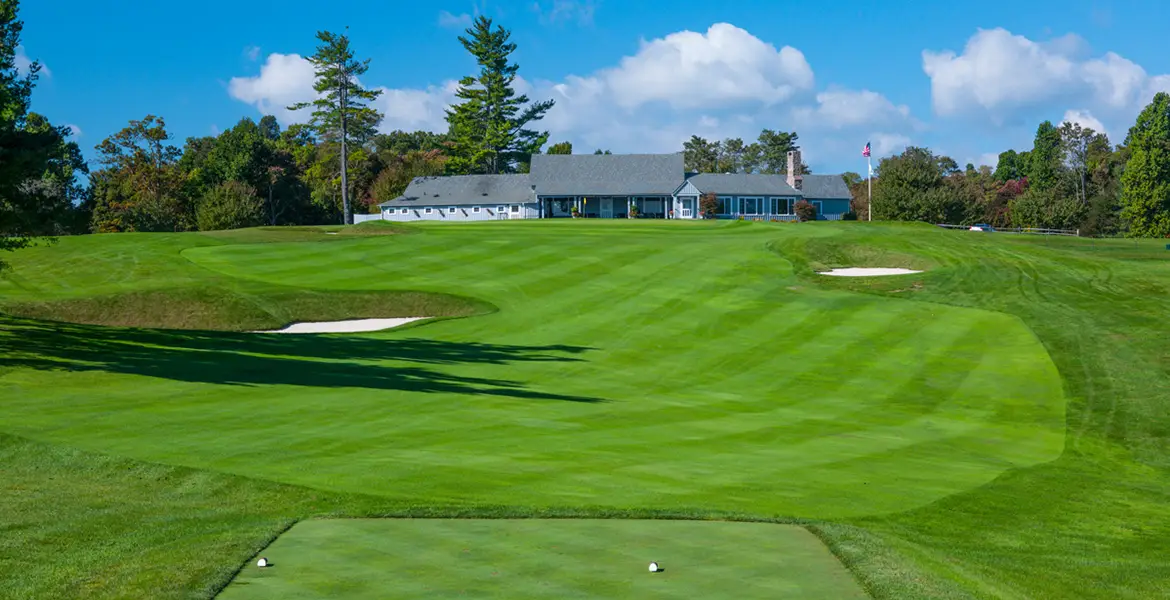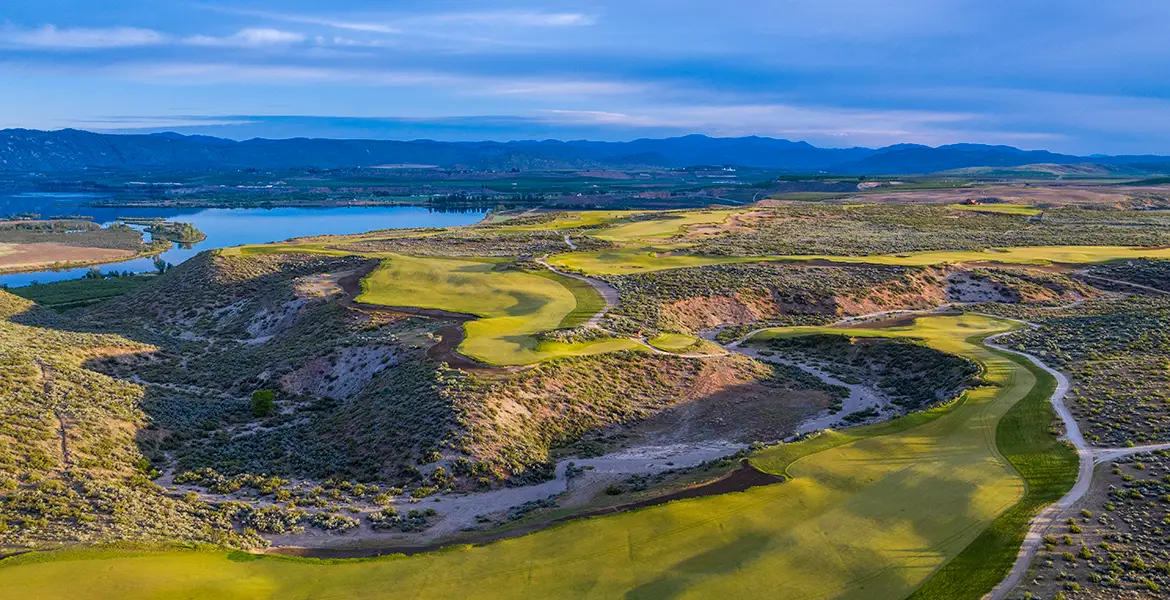Of course they were honored—which golf course architect wouldn’t be? Of course they were humbled—again, would anyone whose vocation in life was to build, renovate, and revive great golf courses not question if they were up to the task, if only for a moment? And yes, of course they were a little nervous about the enormity of it all—it’s not every day you get asked to remake a sacred golf course whose legend, like that of its creator, has soared over the decades since it opened.
Pinehurst No. 2 was well-nigh untouchable but, in 2009, the resort’s then President/CEO Don Padgett II, whose father had been the Director of Golf at Pinehurst from 1987–2002, convinced Robert Dedman Jr., whose family has owned the 129-year-old destination since 1984, to do the unthinkable and carry out a faithful, respectful, and comprehensive restoration of Donald Ross’s masterpiece.
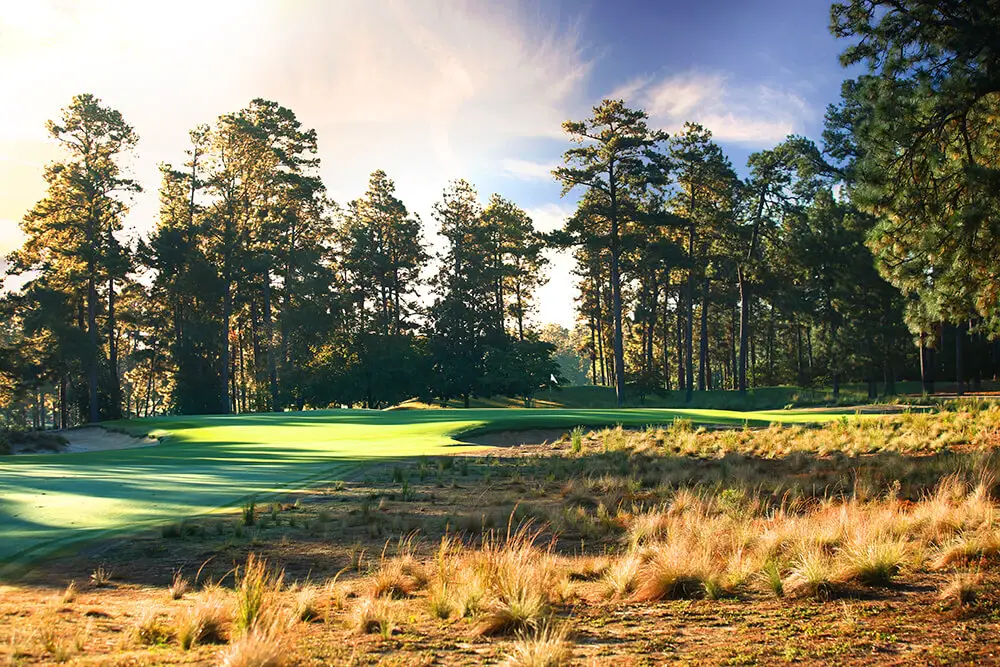
This wasn’t to be a minor bunker renovation with a few tees moved farther back. Padgett was a golf man, devoted to Donald Ross’s memory as well as the golf course, and he wanted it to shine again. He knew that, with acres of deep rough down the sides of every hole and wall-to-wall grass, No. 2 had morphed into something quite unlike what Ross had conceived.
Padgett chose Bill Coore and Ben Crenshaw to complete the work and, although their star hadn’t risen as high as it most assuredly would, they were clearly the men for the job. With new-builds like Sand Hills, Friar’s Head, Bandon Trails, Austin Golf Club, Colorado Golf Club, Old Sandwich, and a handful of other highly regarded courses, Coore & Crenshaw had proven themselves more than capable of building classic golf and equally adept at working with sand—an important consideration at a place like Pinehurst.
Still, Coore certainly wasn’t expecting a call. “I was totally surprised,” he says. “Quite aside from the fact they were asking us to do it, the business model at Pinehurst, driven by No. 2, wasn’t broken. Far from it. It had hosted two successful U.S. Opens, and there seemed to be no need to change the course from a business perspective. Mr. Dedman and Don Padgett wanted to discuss a restoration for the sake of the course, not the bottom line.”
Besides honoring Ross’s great design and fulfilling his client’s ambitions, Coore also had to deal with locals skeptical of what was transpiring. “One evening, shortly after getting underway, I was stopped in the parking lot by a gentleman who said he hoped I knew what I was doing,” Coore remembers with a chuckle. “He said ‘As No. 2 goes, so the town goes.’”
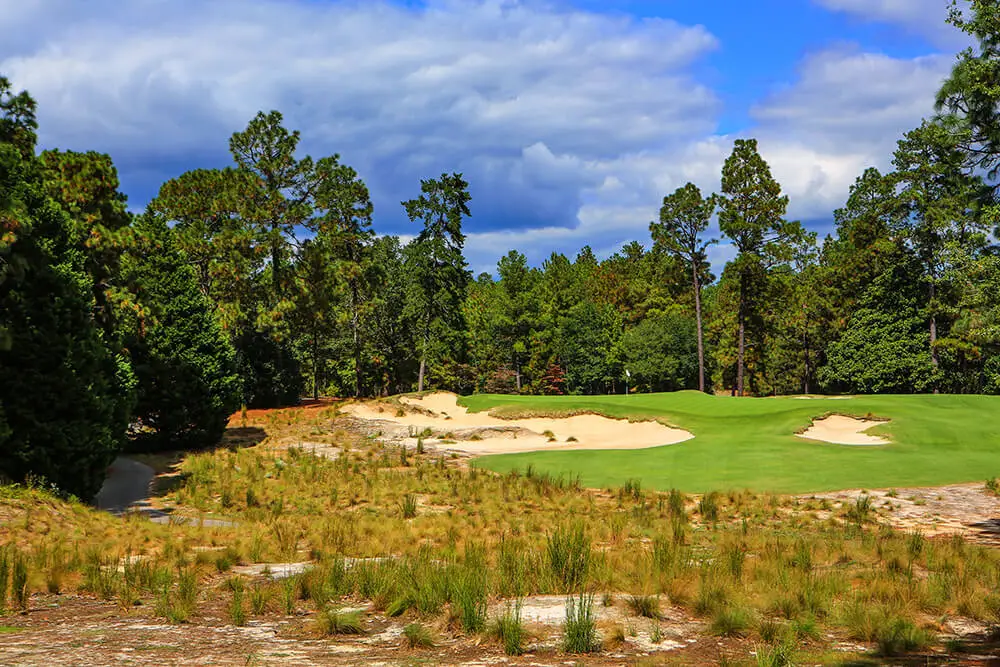
Of course, it would have been entirely appropriate for that gentleman to contact Coore following completion of the work in 2011, to congratulate him and Crenshaw on a sensational job.
For the project total of $2.5 million, the two architects removed 36.2 acres of rough replacing it with sandy areas dotted with wire grass and pine straw; widened the fairways by as much as 50 percent; took out roughly 650 irrigation heads; removed the concrete cart paths; ensured firm and fast conditions all year by eliminating the rye overseed during the winter; remodeled bunkers according to what they had seen on aerial photographs from the 1940s; lengthened the course to 7,565 yards; expanded the 15th and 17th greens slightly to give more hole locations; and removed a number of trees.
Pinehurst No. 2 was transformed. Instead of the monochromatic green, the scene was now a variety of shades of green, brown, and yellow. The course was eminently more playable, and the strategies Ross had devised to challenge great players while allowing less-competent golfers to enjoy themselves had been reinstated. And though Coore says it was a happy result of restoring Ross’s holes, the environmental impact of the restoration was undeniable too, with a drop in water consumption of roughly 40 million gallons a year.
In this Q&A, Coore remembers the hugely significant project.
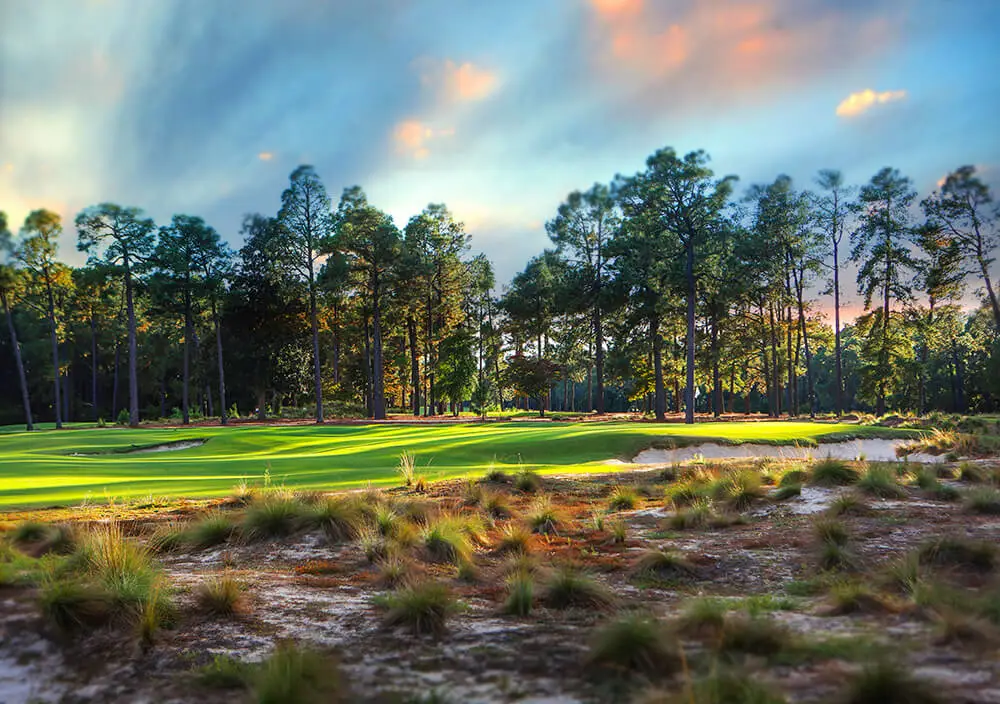
Who did you consider most when restoring the course—resort golfers or U.S. Open contestants?
Coore: Resort players and members were absolutely our priority. I can understand why the USGA might have had serious concerns because we were doubling the width of the fairways, but I remember standing in the first fairway with Mike Davis (former Executive Director of the USGA) telling him our intentions. I thought he might balk at the wider fairways but he agreed we should restore the course for the course’s sake, for Pinehurst and Donald Ross. He assured me the USGA wasn’t going to grow thick rough between the fairways and the sandy areas we were implementing. And they haven’t changed the course since 2014. We weren’t at all concerned with testing U.S. Open players. We knew that if the greens were firmed up even more than they already were and the very back tees were used it would challenge the best players. The greens are the course’s defense.
Speaking of the greens, they’re not exactly as Ross built them, correct?
Coore: No, they are significantly more domed with turtle backs and steep run-offs at the edges than they were when Mr. Ross built them. Images from the PGA Championship in 1936, the year after the original sand greens were turfed, show they were at grade but with beautiful contours. They don’t appear to be domed at all. The greens grew their turtle backs with continued top-dressing. I can only assume they had begun to become crowned before Mr. Ross died in 1948, but that’s speculation.
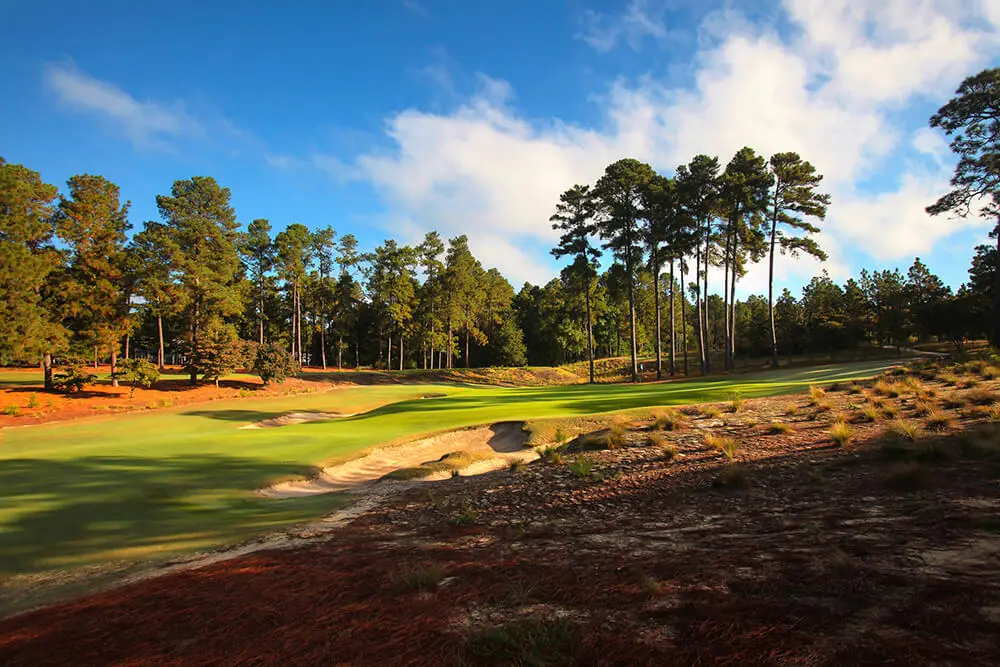
Did you ever consider restoring the greens to their 1935 shapes and dimensions?
Coore: Yes, but it was a pretty short conversation. Mr. Dedman, Don Padgett, Bob Farren, Ben, and I all agreed the domed greens had become too closely associated with Pinehurst No. 2. And we thought Mr. Ross would have approved because they called for incredible precision and creativity.
Is there anything you would have changed about the set-up in 2014 (the first time the U.S. Open was played on No. 2 following the restoration)?
Coore: I think the course played very well, just as we and, I hope, Mr. Ross, would have liked. One suggestion I did hear, I think from Don Padgett, was to have different lengths of grass surrounding the greens—short certainly but not always exactly the same length. That might have prevented Martin Kaymer from putting everything from off the green. I’m sure he did hit a chip shot or two, but I don’t remember seeing any.
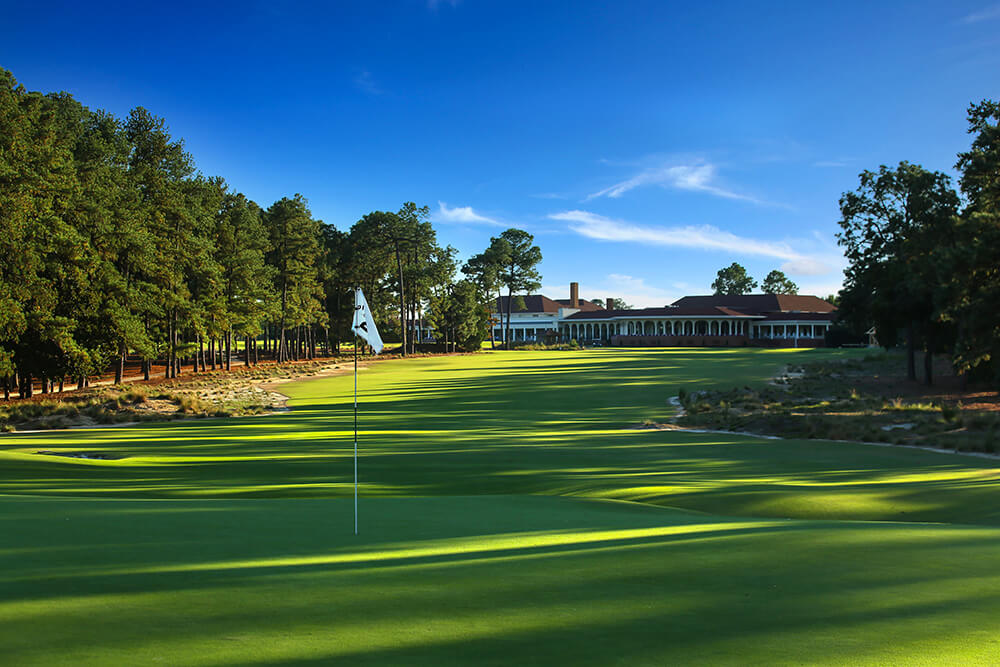
How good was Kaymer?
Coore: I was absolutely stunned by how good he was around the greens. He clearly had a firm game-plan and stuck to it all week. Other players didn’t seem nearly as comfortable from the short grass around the greens. They weren’t quite sure which type of shot to play—a bump-and-run, a lofted pitch, or long putt—and the indecision hurt them. That’s the beauty of short grass around the green. A player is never quite sure what shot to play. With thick rough there really is only one type of shot you can play.
Did you hear anything negative from the players in 2014?
Coore: The only person who voiced their concerns and said they didn’t care for it that I remember was Bubba Watson, which surprised me. I thought he would have enjoyed getting creative around the greens.
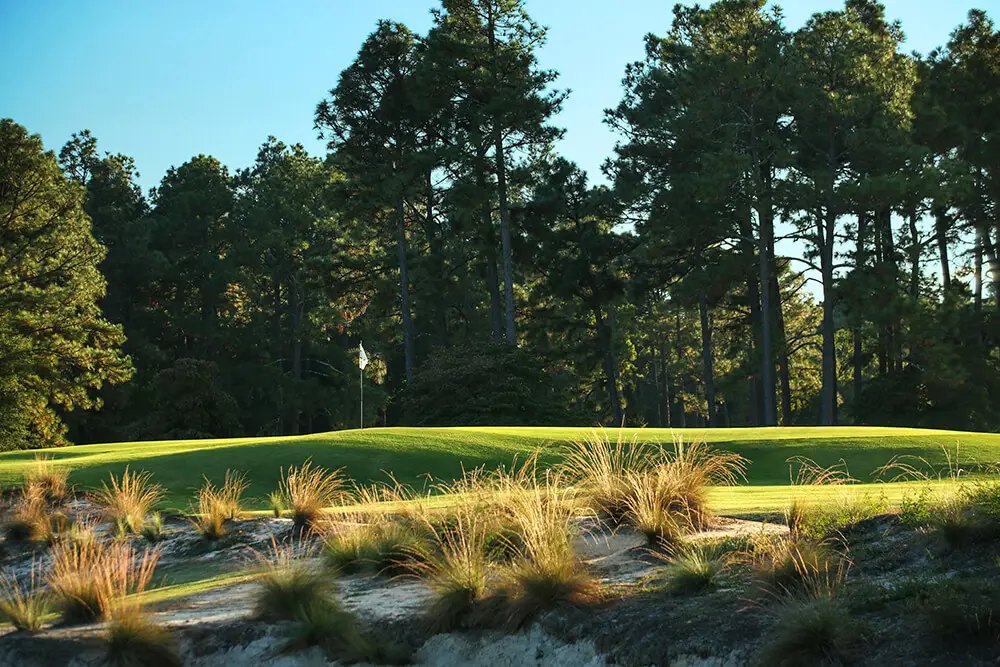
Which hole needed the most work?
Coore: That’s hard to say because a lot of them needed a lot of work and ended up looking different and playing very differently. But I suppose if I had to name one hole it would be the 7th. If you look at footage from 1999 and 2005 and compare it with what’s there now, or was at the 2014 U.S. Open, you’d barely recognize it. But that’s probably true of a lot of the holes.
I know you’ve said the environmental benefits were a welcome result of restoring the course and weren’t your top priority. Explain why you like the single line of irrigation down the middle of the fairways so much.
Coore: You can see it isn’t all green now but a nice range of colors. Green was definitely important to courses during the second half of the 20th century. The Diamondhead Corporation, one of Pinehurst’s former owners, actually documented how green they wanted the course to be. They intended building lots of homes and were going for the Palm Springs look, which obviously wasn’t what Mr. Ross had in mind. The single line of irrigation down the middle of each fairway ensures the middle remains green, but it fades to brown the further from the center you get. We think it looks more natural and ties in better with the sandy areas.

How important do you think the restoration of Pinehurst No. 2 was? It certainly wasn’t the first course to be restored, but its success probably led to the rapid growth of the course restoration and renovation business.
Coore: That’s not really for me to say. I know it was a big deal at Pinehurst, but I can’t really speak for other places. I just don’t know to what degree it impacted the restoration “industry.” But I hope it was significant. I hope it proved you can absolutely bring back courses that had been written off or had become outdated or irrelevant.
Have you played Pinehurst No. 2 since the restoration by Coore & Crenshaw in 2014? Tell us about your round in the comment section.


